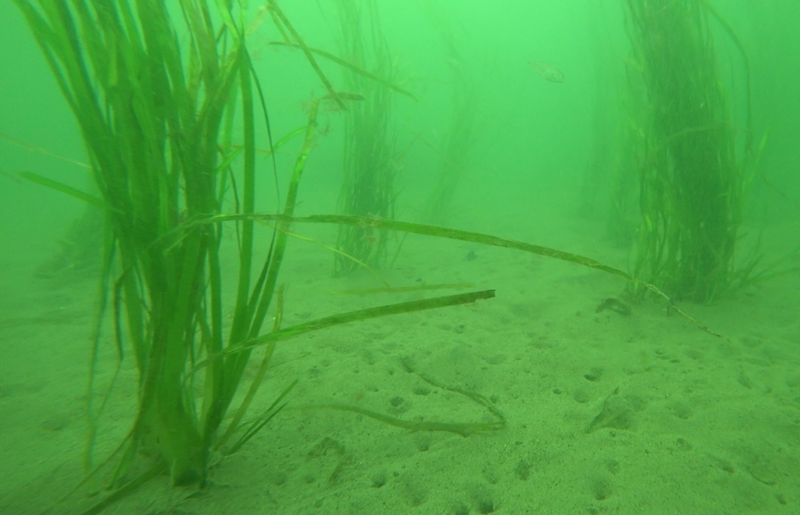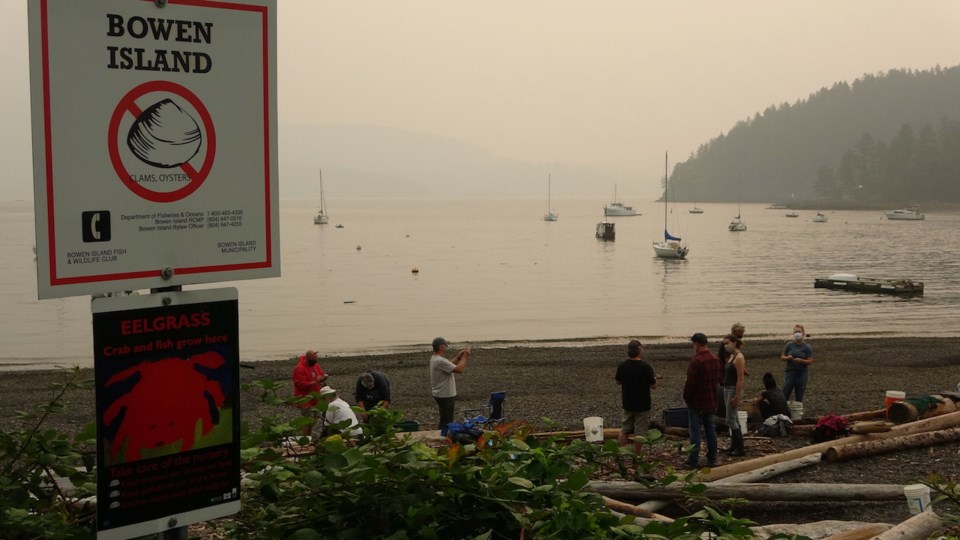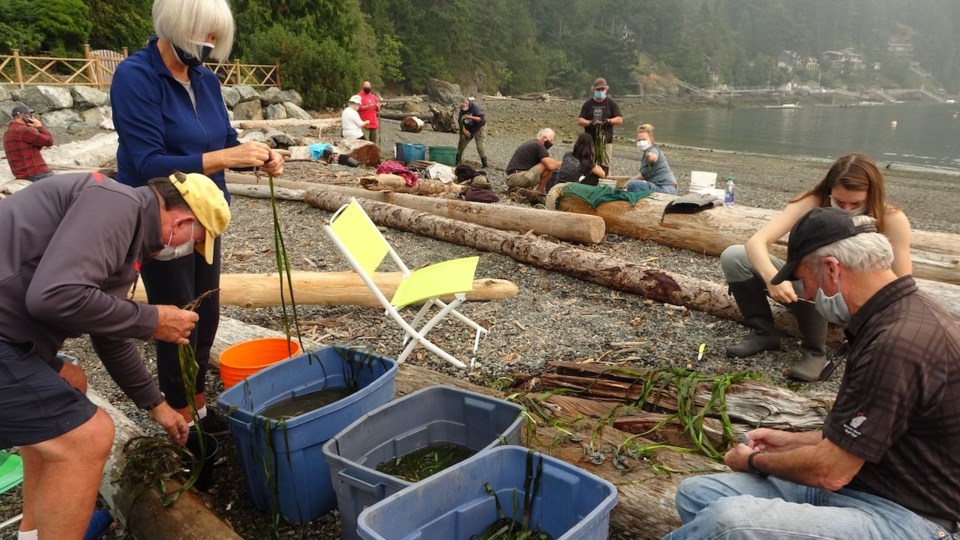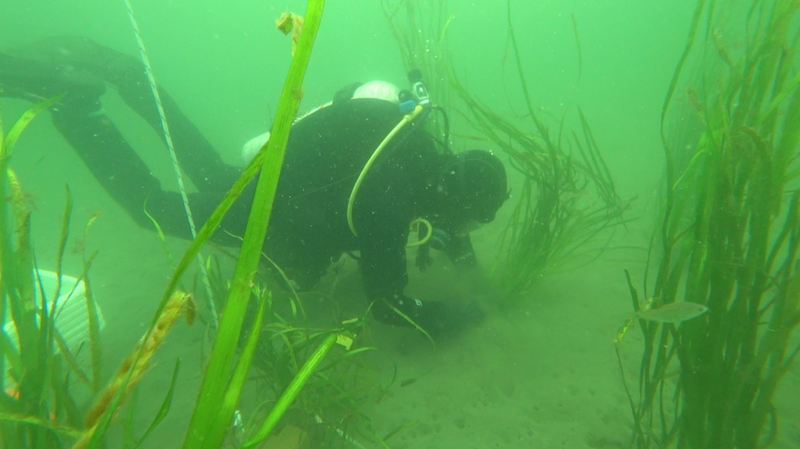Just metres below the surface in Mannion Bay are thick meadows of ribbon-like grass rooted to the sea floor. Juvenile salmon leaving Terminal Creek take refuge in the dense mats before heading out into the open ocean. Dungeness crabs scuttle over the root systems that evolved from land––separating the plant from its algal neighbour seaweed––and scurry among the hundreds of species of fish, invertebrates and birds that depend on the meadows for habitat and food.
Eelgrass can help with shoreline erosion, its blades attenuating wave energy a little, and sequester carbon, storing it in the roots and sediments they’re stabilizing explains Fiona Beaty. Beaty is the Howe Sound/Átl’ka7tsem regional director of the SeaChange Marine Conservation Society-funded Salish Sea Nearshore Habitat Recovery Project.
“For all of these diverse reasons, [Eelgrass is] also quite vulnerable to human impacts,” says Beaty.

Staring out over Mannion Bay toward the North Shore mountains, the left side of the bay has a really healthy eelgrass meadow, however, the closer you get to the Terminal Creek outflow, the less healthy and more fragmented the eelgrass gets. “That might be due to water quality issues, or people anchoring in the eelgrass or mooring buoys or even just climate change and weather patterns,” says Beaty.
So Sept. 17, under cover of smoke and protection of masks, Beaty led an operation: an eelgrass transplant. Members of the Fish and Wildlife Club, the Friends of Mannion Bay, B.I. Conservancy, B.I. Municipality and residents of Deep Bay were among the small group of volunteers who came out to help. (The event was kept small due to COVID).
“We’re trying to not only restore the habitat quality by doing these transplants but also reconnect the people who live around the bay to their ocean life,” says Beaty.

Over the past few years, SeaChange has done eelgrass transplants across the sound (including four on Gambier, one on Keats, and two on Bowen––last year in Tunstall Bay), as well as subtidal garbage cleanups, replanting vegetation along shorelines, community engagement and some eelgrass mapping.
“The Mannion Bay transplant was really exciting because it builds directly upon what the Bowen Island Municipality and the community has been doing in that region for the past few decades, which is to progressively restore the social and ecological integrity of bay and the health of the bay,” says Beaty, noting the municipality’s efforts to monitor and regulate mooring buoys and remove subtidal debris.

While it might be tempting to blame the state of Mannion Bay on the activities of a certain resort starting a century ago, Beaty says the degradation of the bay is probably due to more recent human activities over the past few decades––a high number of people dropping anchor, untreated sewage emptied into the bay and climate change. “And so in a way that that puts the control into our hands for managing that those activities,” says Beaty. “Because they’re still they’re still happening. It’s not so much this legacy effect that we can’t do anything about.”
With the beaches having the right sediment size for forage fish to spawn, salmon headed up and down the Terminal Creek water flow to the hatchery, and the eelgrass, Mannion Bay has the potential to be a “really thriving marine area” says Beaty. “And it already kind of is working its way towards that.”

Should this transplant be successful, SeaChange will return in the spring to do another in the same area.
SeaChange Marine Conservation Society, based on Vancouver Island, does restoration and community engagement to improve the habitat quality of nearshore ecosystems––anywhere from the trees and plants along the beaches down to the upper sub-tidal areas where eelgrass and kelp grow.



